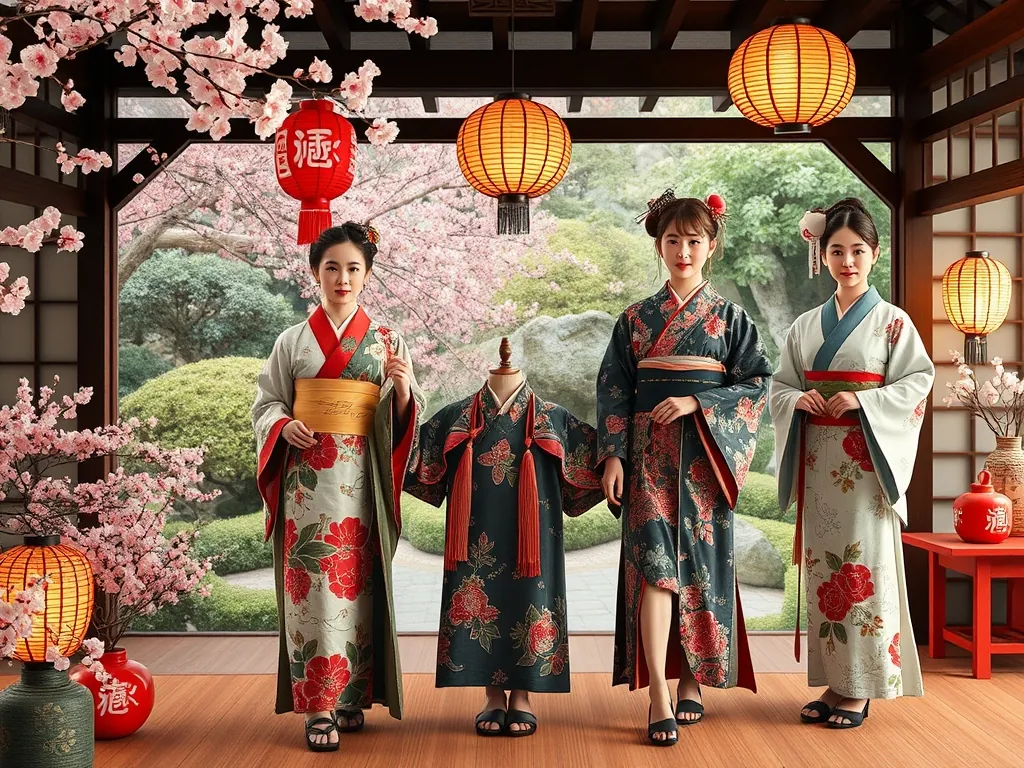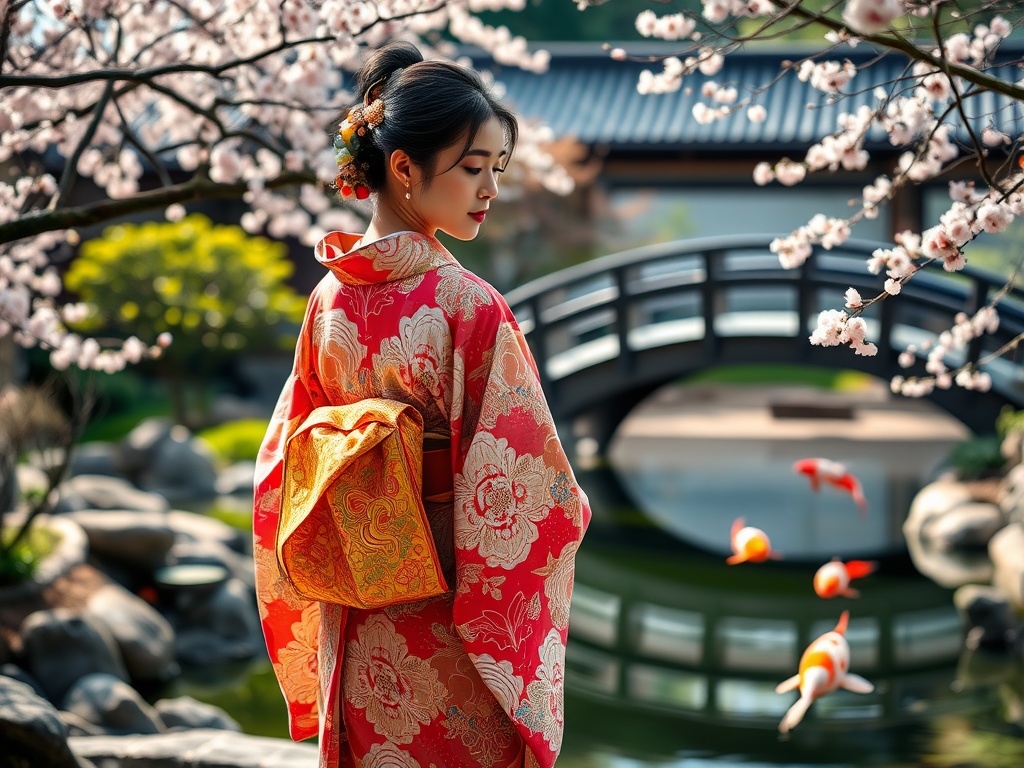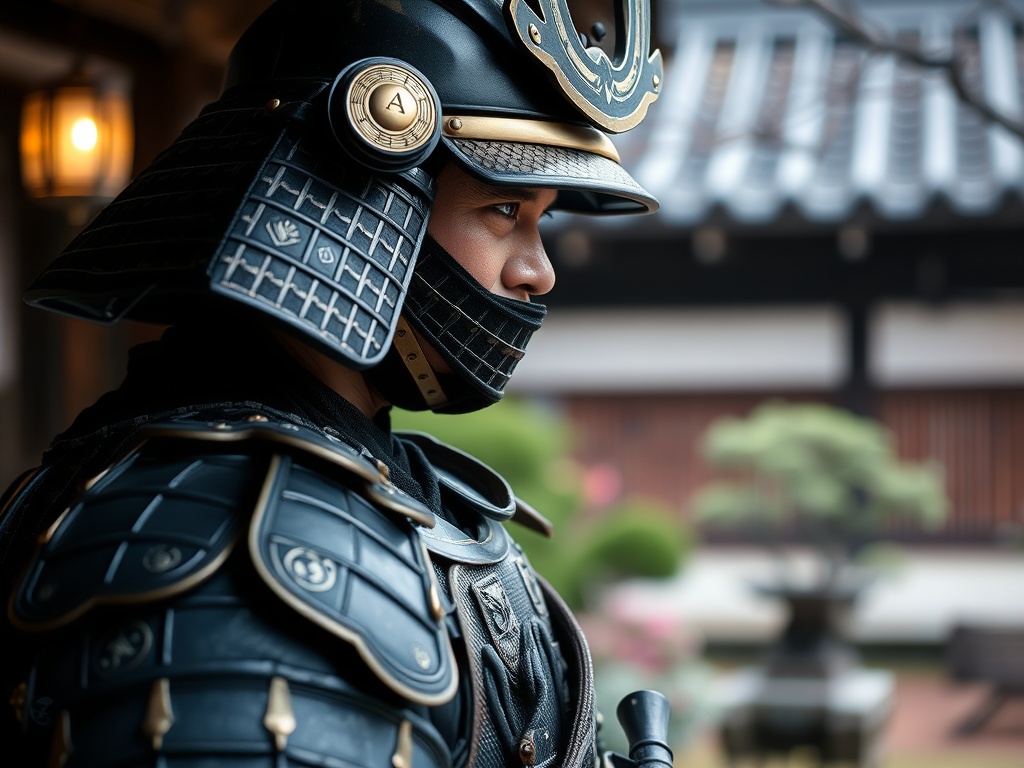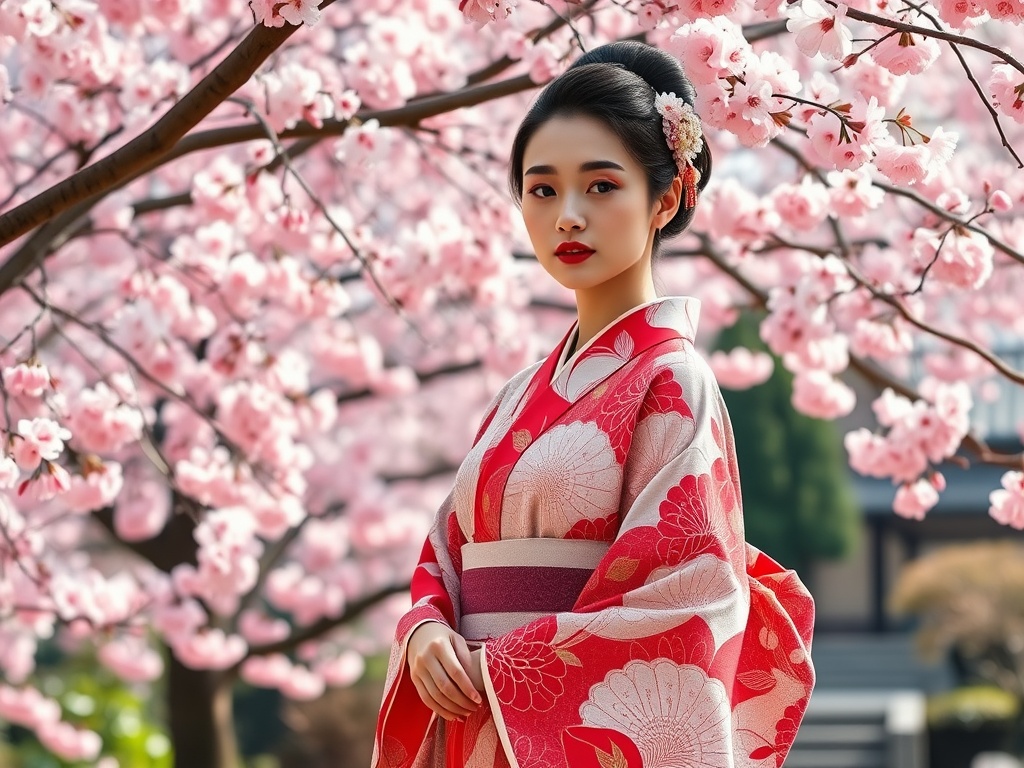Kimono Chronicles: The Art and Soul of Traditional Japanese Attire
Win a Free Trip to Japan!
Experience cherry blossoms and ancient temples
Embark on a vibrant journey through the Kimono Chronicles, where the delicate threads of history, art, and culture are woven into the fabric of traditional Japanese attire. This guide will unravel the intricate stories and timeless elegance of the kimono, offering travel and tourism enthusiasts an enchanting glimpse into Japan’s sartorial heritage.
The kimono, with its majestic folds and captivating patterns, has been an emblem of Japanese culture for centuries. It’s more than just clothing; it’s a canvas that paints the tales of seasons, ceremonies, and artistic expression. From the vibrant hues of a furisode worn by young women to the subtle elegance of a tomesode for married women, each kimono tells a story and is a masterpiece in its own right.
Travelers visiting Japan are often enchanted by the sight of locals donning these traditional garments, especially during festivals and weddings. In cities like Kyoto and Tokyo, you can even rent a kimono and stroll through scenic streets to experience the allure firsthand. Feel the gentle rustle of silk against your skin and imagine the centuries of tradition that have shaped this iconic attire.
The art of kimono-making is laden with cultural significance, where every stitch and design element is carefully chosen. Patterns often symbolize nature’s beauty or convey wishes of prosperity and happiness. For instance, cranes represent longevity, while cherry blossoms herald the arrival of spring. Each motif carries a message, making the kimono a poetic expression of Japanese identity.
Those interested in diving deeper into kimono culture can visit museums like the Kyoto Costume Institute, which showcases an extensive collection of kimonos and provides insights into their historical evolution. Workshops are also available for those eager to learn about traditional dyeing techniques and the art of kimono dressing.
Understanding the different types of kimonos and when to wear them can enhance your cultural experience in Japan. Here’s a quick guide:
- Furisode: A formal kimono with long, flowing sleeves, typically worn by unmarried women during coming-of-age ceremonies and weddings.
- Tomesode: A more subdued kimono with shorter sleeves, worn by married women on formal occasions.
- Yukata: A casual, lightweight kimono often seen at summer festivals, offering comfort and style in the warmer months.
- Hakama: Traditional trousers worn over a kimono, often seen during graduation ceremonies and martial arts events.
Whether you’re donning a kimono for a photoshoot or attending a traditional tea ceremony, understanding these nuances will enrich your experience and leave you with cherished memories of your time in Japan.
Samurai Style: Unraveling the Mystique of Warrior Fashion
Venture into the enigmatic world of samurai fashion and unravel the mystique that surrounds the attire of these legendary warriors. Beyond their martial prowess, samurais were known for their distinctive clothing, which symbolized honor, discipline, and a connection to their heritage. For those captivated by the allure of Japanese history and culture, exploring the sartorial legacy of the samurai offers a fascinating glimpse into an era defined by strength and elegance.
The Armor of Honor: Samurai Attire and its Symbolism From the intricate patterns of their kimono to the formidable presence of their armor, samurai clothing was steeped in symbolism and function. The samurai’s kimono, often worn beneath their armor, was designed for both comfort and mobility, reflecting the wearer’s status and clan affiliation. The armor, crafted meticulously from leather, iron, and silk, was not only a protective shield but also a display of the samurai’s aesthetic sensibility.
Travelers visiting Japan can witness authentic samurai attire in museums such as the Samurai Museum in Tokyo or the Nagoya Castle, where exhibits detail the evolution of samurai gear. These displays reveal how the blend of practicality and artistry in samurai clothing continues to inspire modern design.
Beyond the Battlefield: Samurai Fashion in Modern Japan The influence of samurai fashion extends beyond historical reenactments, permeating modern Japanese culture. Elements of samurai style can be observed in contemporary fashion, where designers infuse traditional motifs with modern aesthetics, creating garments that pay homage to the past while appealing to today’s fashion-forward audience. For those wishing to experience this unique blend firsthand, Kyoto’s bustling shopping districts offer a range of boutiques specializing in modern takes on traditional samurai attire.
Embracing samurai fashion allows travelers to connect with Japan’s rich history and appreciate the enduring legacy of these iconic warriors. Whether exploring ancient castles or browsing contemporary boutiques, the spirit of the samurai continues to captivate and inspire.
Cherry Blossom Chic: Seasonal Attire and Its Cultural Significance
As the delicate cherry blossoms bloom across Japan, they herald not only the arrival of spring but also a vibrant transformation in traditional attire. This ephemeral beauty, known as sakura, inspires a unique sartorial elegance that captures the hearts of locals and visitors alike. Travel and tourism enthusiasts seeking an authentic cultural immersion will find the cherry blossom season a perfect time to explore the harmonious blend of nature and fashion in Japanese culture.
During the fleeting weeks of cherry blossom season, kimonos adorned with sakura motifs become a popular choice for those attending hanami, or flower-viewing parties. These garments, often featuring soft pinks and whites, reflect the transient beauty of the blossoms and symbolize renewal and hope. The patterns and colors chosen for these kimonos are not mere decoration; they embody the essence of spring and the joy it brings to the Japanese people. Travelers can partake in this tradition by renting a sakura-themed kimono and joining locals in the serene parks and gardens, where the air is filled with the sweet scent of blossoms.
Hanami is more than just a visual delight; it’s an opportunity to indulge in the cultural richness of Japan. As you stroll beneath the pink canopy of cherry blossoms, you’ll notice that seasonal attire isn’t limited to kimonos. Yukatas, a lighter, more casual version of the kimono, are also popular during this time. Complemented with traditional accessories like obijime and geta, these garments allow for a comfortable yet stylish celebration of spring. Visitors are encouraged to embrace this fashion and participate in the lively hanami gatherings, where music, food, and camaraderie create an unforgettable experience.
| Seasonal Attire | Cultural Significance |
|---|---|
| Kimono with Sakura Motifs | Symbolizes Renewal and Hope |
| Yukata | Comfortable Fashion for Spring Celebrations |
Visiting Japan during the cherry blossom season offers a rare chance to witness the seamless integration of nature and fashion in Japanese culture. As you don these beautifully crafted garments, you’ll not only feel the gentle embrace of tradition but also a profound connection to the cycle of life celebrated through the cherry blossoms.
The Obi Odyssey: Secrets Behind the Iconic Sash
In the realm of Japanese traditional fashion, the obi stands as a captivating centerpiece that binds the elegance of the kimono together. This iconic sash is not merely a functional accessory but a *symbol of artistry and cultural depth* that has evolved over centuries. For those embarking on a journey through Japan’s sartorial landscape, understanding the *obi’s historical significance* and its role in Japanese attire offers a richer appreciation of this intricate fashion tapestry.
The obi is a masterpiece in its own right, showcasing the skill and creativity of Japanese artisans. With each fold and knot, the obi transforms the kimono into a work of art, highlighting the wearer’s status and personal style. Obis are crafted from a variety of materials, ranging from sumptuous silk to understated cotton, and often feature elaborate designs that *convey messages or tell stories*. From *geometric patterns to floral motifs*, each obi is a canvas that reflects the changing seasons and the wearer’s identity.
Travelers interested in exploring this facet of Japanese fashion can visit traditional textile workshops, where they can witness firsthand the meticulous process of obi creation. These workshops offer a glimpse into the techniques that have been passed down through generations, emphasizing the *dedication and precision* required to produce these exquisite sashes. The art of tying an obi, known as musubi, is an equally fascinating tradition, with various styles indicating different occasions or social standings.
The diversity of obi styles is a testament to the *rich narrative woven into Japanese fashion*. From the formal maru obi, often reserved for special events, to the casual hanhaba obi, each style serves a unique purpose and carries its own story. The fukuro obi, with its ornate designs, is commonly seen at weddings and ceremonies, while the nagoya obi offers a more practical option for everyday wear. Understanding these distinctions not only enhances one’s appreciation of Japanese fashion but also provides insight into the cultural nuances that shape this timeless tradition.
For those visiting Japan, participating in kimono dressing sessions offers an opportunity to experience the *art of obi firsthand*. Expert instructors guide participants through the process of selecting and tying an obi, enriching their understanding of this essential element of Japanese attire. As you wrap the obi around your waist, you’ll feel the *connection to centuries of tradition*, a reminder of the enduring beauty and complexity of Japanese fashion.
Geisha Glamour: The Elegance and Enigma of Maiko and Geisha Costumes
Step into the alluring world of Geisha Glamour, where the elegance and enigma of traditional Japanese artistry come to life through the costumes of maiko and geisha. These iconic figures, shrouded in mystery and grace, offer a captivating glimpse into a cultural legacy that has been meticulously preserved for centuries. For travel and tourism enthusiasts eager to explore Japan’s rich traditions, understanding the nuances of maiko and geisha attire is a journey into the heart of Japanese aesthetics and craftsmanship.
The attire of a maiko, or apprentice geisha, is a vivid tapestry of youthful exuberance and intricate detail. With their vibrant kimonos and elaborate hairstyles, maiko symbolize the blossoming of beauty and skill. Each element of their costume, from the richly embroidered collars to the cascading sleeves, tells a story of dedication and artistry. As you wander through the historic streets of Kyoto, you’ll find maiko donning these exquisite garments, their presence a living testament to the enduring allure of geisha culture.
Witnessing a maiko’s transformation is an experience that transcends fashion—it’s a celebration of tradition and the meticulous training that shapes these young women into cultural icons. The vibrant patterns and bold colors of their kimonos are chosen with care, each representing a stage in their journey and a reflection of the seasons. As you explore Japan, consider visiting a tea house where maiko perform, offering a unique opportunity to engage with this enchanting world.
Geisha, the epitome of refined elegance, are revered for their poise and mastery of traditional arts. Their attire, while more subdued than that of a maiko, exudes a sophistication that speaks to their status and experience. The subtlety of their kimono designs, often featuring muted tones and delicate motifs, reflects the geisha’s role as a mature artist and entertainer. In cities like Tokyo and Kyoto, you can participate in cultural programs that delve into the life and artistry of geisha, providing insights into their rigorous training and the significance of their costumes.
The transformation from maiko to geisha is marked by changes in attire, including the shift to a more understated kimono and the iconic naga-obi sash. These elements, imbued with symbolism and tradition, offer a window into the elegance that defines the geisha’s world. As you explore this captivating aspect of Japanese culture, you’ll discover the depth of artistry that continues to inspire and captivate audiences worldwide.
Crafting Tradition: A Journey into the World of Japanese Textile Artistry
Immerse yourself in the rich tapestry of Japanese textile artistry, where tradition and innovation intertwine to create some of the most exquisite fabrics in the world. This journey into the heart of Japan’s textile heritage offers an insightful exploration of the techniques and materials that have been cherished and perfected over centuries. As you navigate through the vibrant landscapes of Japan, you’ll discover that each textile tells a story of cultural evolution, personal expression, and artistic mastery.
At the core of Japanese textile artistry lies the intricate process of weaving and dyeing, where artisans employ age-old techniques to produce fabrics that are as beautiful as they are meaningful. From the delicate patterns of kasuri to the vibrant hues of shibori, each method reflects a unique aspect of Japanese culture and craftsmanship. Travelers can explore this fascinating world by visiting traditional workshops in Kyoto or Okinawa, where skilled craftsmen demonstrate the meticulous art of creating these timeless textiles. By witnessing their dedication and precision, visitors gain a deeper appreciation for the cultural significance embedded in every thread and color.
Silk holds a special place in Japanese textile tradition, renowned for its luxurious texture and inherent elegance. The journey of silk from mulberry fields to a masterpiece of fashion is a testament to the dedication and expertise of Japanese artisans. In regions like Yamanashi and Gunma, travelers can trace the silk-making process, from the cultivation of silkworms to the final weaving of intricate designs. These regions offer a glimpse into the life cycle of silk, providing an opportunity to understand the symbiotic relationship between nature and artistry that defines Japanese textile production.
For those seeking a hands-on experience, workshops offer the chance to try their hand at weaving or dyeing, allowing participants to create their own piece of Japanese textile art. Such experiences not only enrich the traveler’s journey but also forge a personal connection to the enduring legacy of Japanese craftsmanship.
Festival Fashions: Explore the Vibrancy of Matsuri Attire
As you embark on your journey through Japan, the vibrant world of matsuri—or festivals—invites you to experience the spirited essence of Japanese culture through fashion. These festivals, steeped in tradition and communal joy, are not only a feast for the senses but also a showcase of colorful and dynamic attire that reflects the unique character of each celebration. For travel and tourism enthusiasts, each matsuri offers a captivating glimpse into local customs, where clothing plays an integral role in the festivities.
Festival attire in Japan is as diverse as the festivals themselves, ranging from the playful to the ceremonial. Central to these celebrations is the yukata, a lightweight summer kimono that embodies both comfort and style. The yukata’s vibrant hues and patterns are often inspired by the season, with motifs such as fireworks or waves symbolizing the joy and energy of summer. As you stroll through crowded festival streets, the sight of locals and visitors alike donning yukatas adds to the festive atmosphere, creating a lively tapestry of color and movement.
Another staple of matsuri fashion is the happi coat, a traditional straight-sleeved coat often emblazoned with bold, striking designs. Worn by festival participants and performers, the happi coat signifies unity and pride, often bearing the emblem of a family or organization involved in the festivities. This garment is not only a symbol of cultural identity but also a practical choice, providing freedom of movement for lively dances and processions. The combination of yukata and happi in matsuri fashion highlights the seamless blend of aesthetic beauty and cultural significance that defines Japanese traditional attire.
While deeply rooted in tradition, matsuri attire is also a canvas for contemporary expression. Modern designers are increasingly incorporating elements of traditional festival clothing into their collections, offering fresh interpretations that appeal to today’s fashion-forward audience. This fusion of old and new is evident in the bold prints and innovative cuts found in modern yukatas, which maintain their traditional charm while embracing a modern sensibility.
For visitors eager to immerse themselves in the festival spirit, many cities offer rental services for festival attire, allowing you to experience the joy of participating in a matsuri in authentic style. Whether you choose to wear a traditional yukata or a modern interpretation, the experience of dressing in festival attire will not only enhance your appreciation of Japanese culture but also leave you with cherished memories of your time in Japan.
Footsteps of the Past: The Fascinating Tale of Geta and Zori Footwear
Venture into the world of traditional Japanese footwear and discover the stories that lie beneath every step. The geta and zori are not just functional accessories; they are cultural artifacts that offer insights into Japan’s rich history and societal norms. As you wander through the bustling streets of Japan, you will encounter these iconic shoes that have adorned the feet of the Japanese for centuries, each pair echoing tales of tradition and elegance.
The geta, with its distinctive elevated design, serves as both a practical and artistic marvel in Japanese fashion. Originally crafted to keep feet dry and clean in muddy or wet conditions, geta have evolved into a symbol of cultural heritage. These wooden sandals, characterized by their two prongs or teeth, create a rhythmic clacking sound that resonates with the cadence of ancient Japan. Geta are often embellished with intricate carvings and vibrant colors, reflecting the wearer’s personality and social status. Travelers visiting regions like Kyoto can find artisans dedicated to crafting these traditional masterpieces, offering an opportunity to witness the meticulous artistry that goes into each pair.
Zori are the epitome of grace and sophistication, often seen paired with the formal attire of a kimono. Unlike the geta, zori are flat and crafted from materials such as cloth, leather, or straw, making them a more refined choice for special occasions. The design of zori is simple yet elegant, allowing the beauty of the kimono to remain the focal point. As you attend events like tea ceremonies or weddings in Japan, you’ll notice how zori complement the attire, with their subtle colors and textures enhancing the overall ensemble. Many shops in cities like Tokyo offer beautifully crafted zori, providing visitors with a chance to embrace this aspect of traditional Japanese fashion.
For travel and tourism enthusiasts, the exploration of geta and zori footwear is a gateway to understanding the intricate tapestry of Japanese culture. Whether you choose to don a pair for a stroll through a historic district or simply admire their craftsmanship, these shoes offer a unique and tactile connection to the past. As you walk in the footsteps of those who have worn them before, you’ll gain a deeper appreciation for the enduring legacy of Japanese traditional fashion.



